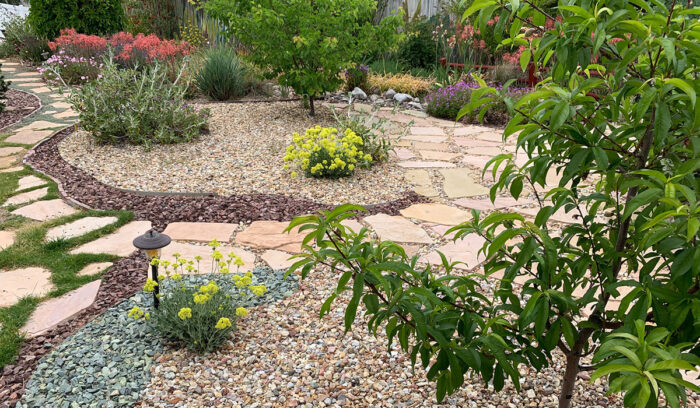
As water becomes a critical issue in Southern California, it has become imperative to seek a new definition of what gardening is about and what we want our landscapes to look like. With a thoughtful approach, these spaces can be decorative, ecologically friendly, useful, and maintainable. But we need to expand our habits, expectations, and perceptions to embrace wider possibilities. Below you’ll learn how to create a water-wise garden with stone as a main feature.
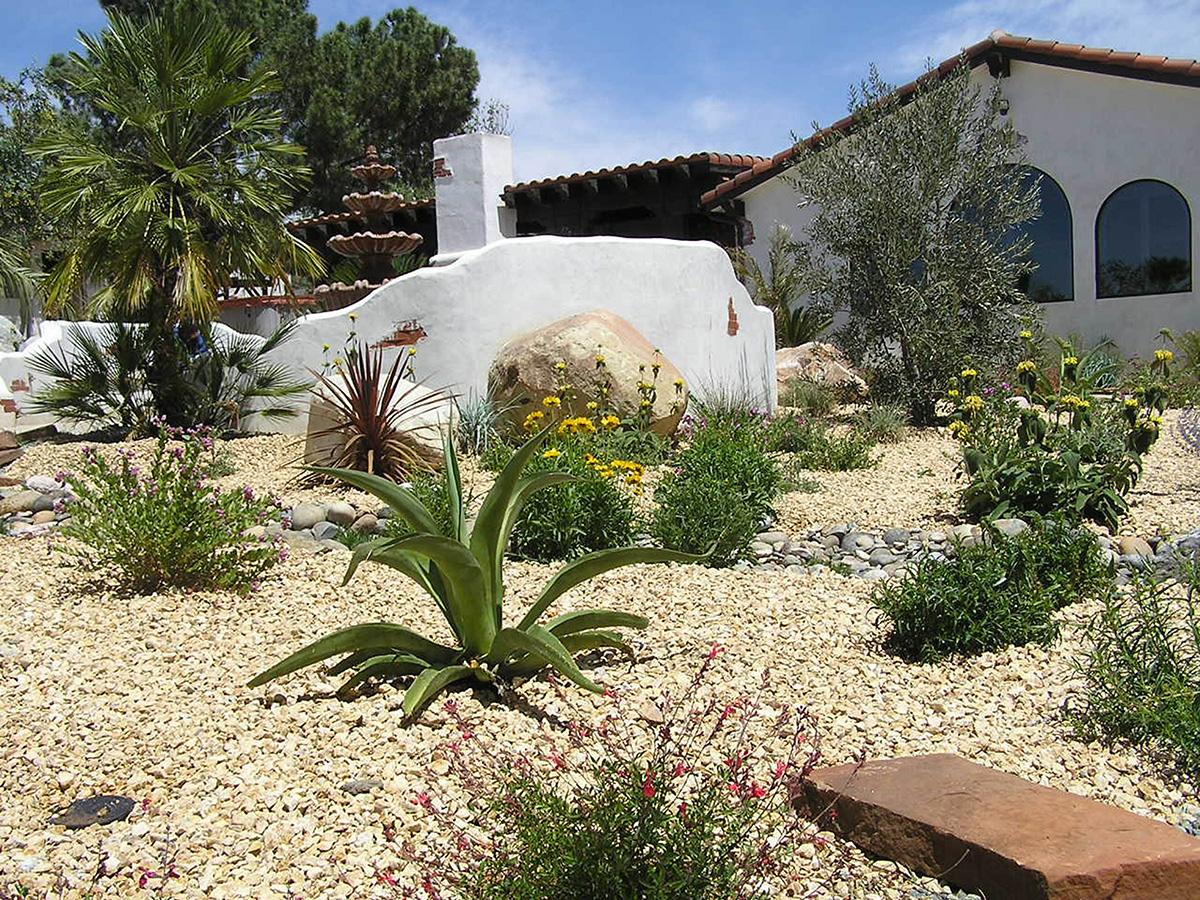
Stone is a perfect garden material when purposefully placed for form and function
Stone is usually associated with desert landscaping. However, most of the Southern California biome is more flexible than desert. Finding creative ways to mix nonliving materials with growing plants can increase visual impact while saving water.
Using a wider definition of stone, the creative gardener can incorporate stepping-stones, pavers, chips, rocks, bricks, boulders, blocks, gravel—and even decomposed gravel and tumbled grass—into the textural and color palette of the new SoCal garden.
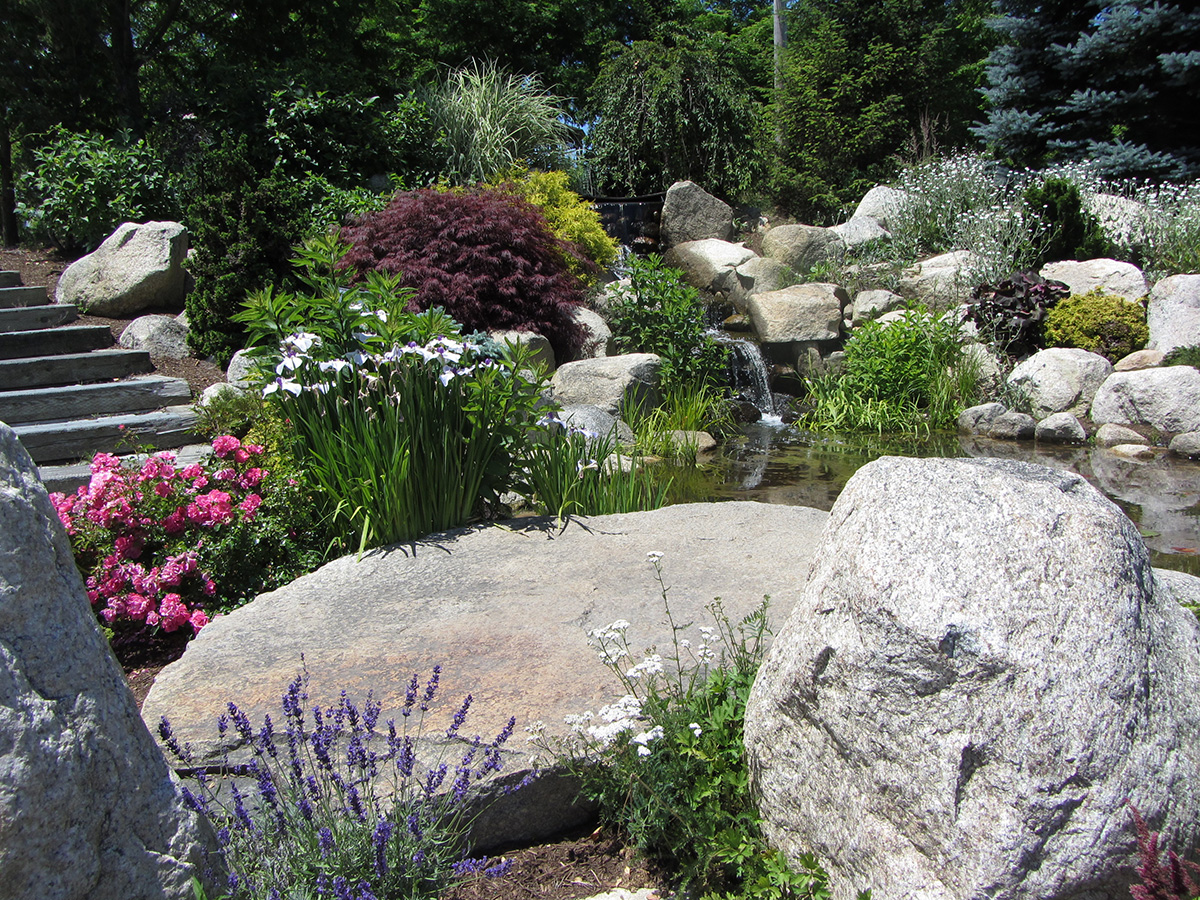
Hardscape materials offer many options and benefits
Stone, rock, and even concrete offer a medium that has endless possibilities. These materials will not burn, so they offer wildfire resistance. Stone can be set up to be permeable so that it helps save rain or run-off by filtering it back into the ground. It can also be used to create basins to store precious water.
Because it is strong and firm, stone and its many forms can support weight. Chips, pebbles, and slabs can be used to build fountains or other recycled-water features. Stepping-stones and gravel are solid choices for paving paths and patios. Boulders and rocks can be sculpted into beautiful and practical seating areas.
Filling areas between stones can offer opportunities for artistic planting. Beautiful and tough creeping perennials like sedums (Sedum spp. and cvs., Zones 3–11) work perfectly to fill between and to soften the edges of flat pavers. Partner boulders with small trees, colorful shrubs, or ornamental grasses. And liven up drifts of gravel with sprawling patches of colorful succulents, tough native shrubs, or brightly hued annual or perennial flowers.
Many stone designs require little or no maintenance
When combined with native or succulent plants, stones and rocks provide juxtaposed and eye-catching design elements that require very little care. Small pieces of rock and gravel can be spread as a mulch and to establish water-permeable surfaces. The addition of flat rocks to conduct water into depressions helps to retain water for slightly thirstier, drought-tolerant plantings.
Here are some ideas to help start the process of designing with stone.
1. Sketch out a rough, overall landscape layout with basic stone framework elements
- Create practical access with artistic, meandering pathways.
- Add informal patios to enjoy with friends, family, pets, or for a quiet time alone.
- Form dry riverbeds for textural effects that will drain away occasional excess water.
- Build walls that define rooms for seating, play areas, or custom-irrigated flower or edible gardens.
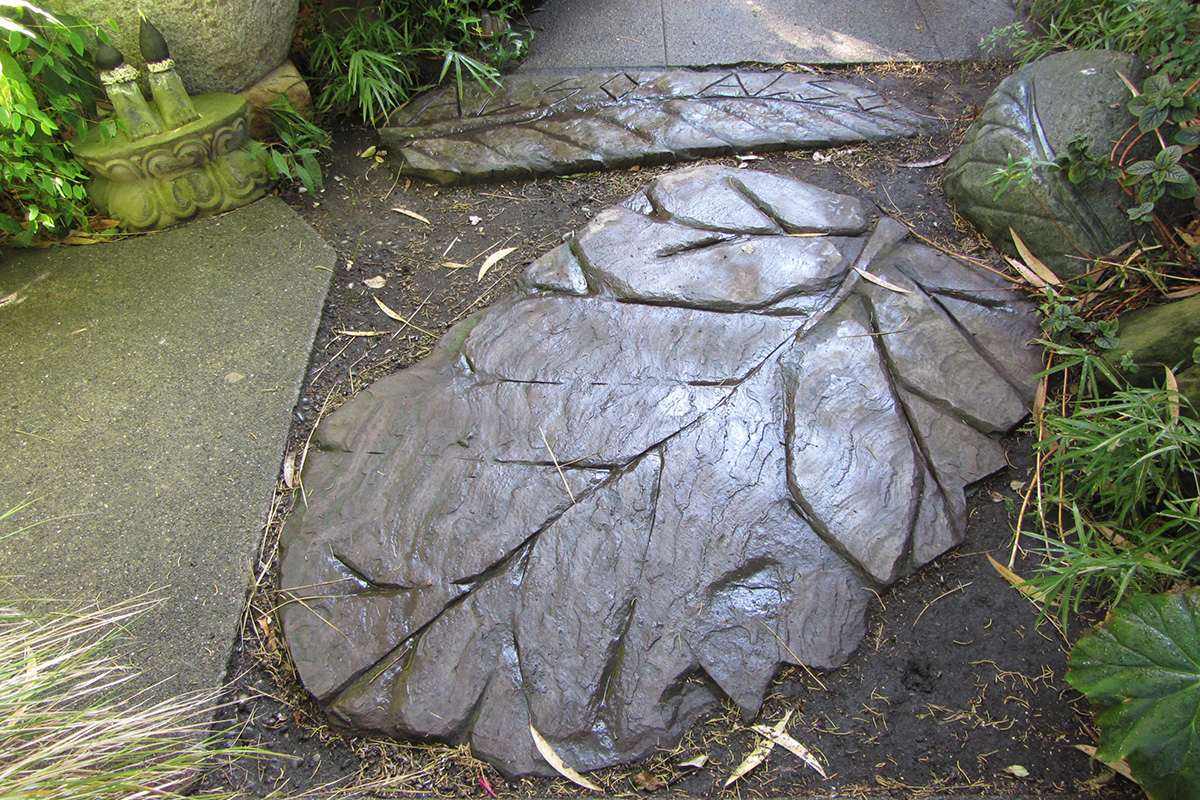
2. Follow basic artistic rules to make the landscape picturesque
- Keep group effects, such as boulders, clustered in odd numbers to look natural.
- Use straight lines, circles, or right angles only in formal designs or for geometrical gardens.
- Be creative with color. Complement dark with light shades, nonliving materials with patches of contrasting plants, or sharp angles with curves.
- Terrace hillsides with regular or irregular designs that keep soil in place. Break up tiers and steps with flows of cascading flowers and greenery.
- Mix and match materials such as bricks, decomposed granite, rocks, stepping-stones, and concrete to vary texture.
- Design in color. Stone comes in a rainbow of colors. Not only can you create your own mosaics, but you can create the effect of grass with green gravel or a river/pond with blues. Add some magical sparkle with tumbled glass.
- Concrete is rock, too, and it can be formed into any shape in any size, poured into patches, colored, stamped, or textured.
3. Take advantage of the properties of stone
- Keep in mind that the density of rock and stone causes it to heat up in our intense sunshine and then to radiate heat when the air cools. Take advantage of this quality in areas that are chilly in winter.
- Avoid using dark colors in exposed locations of dense surfaces like cement or rock where radiant heat can build up and harm bare feet or wilt delicate plantings. Alternatively, protect these areas by designing an overhead shade to shield them from direct sun.
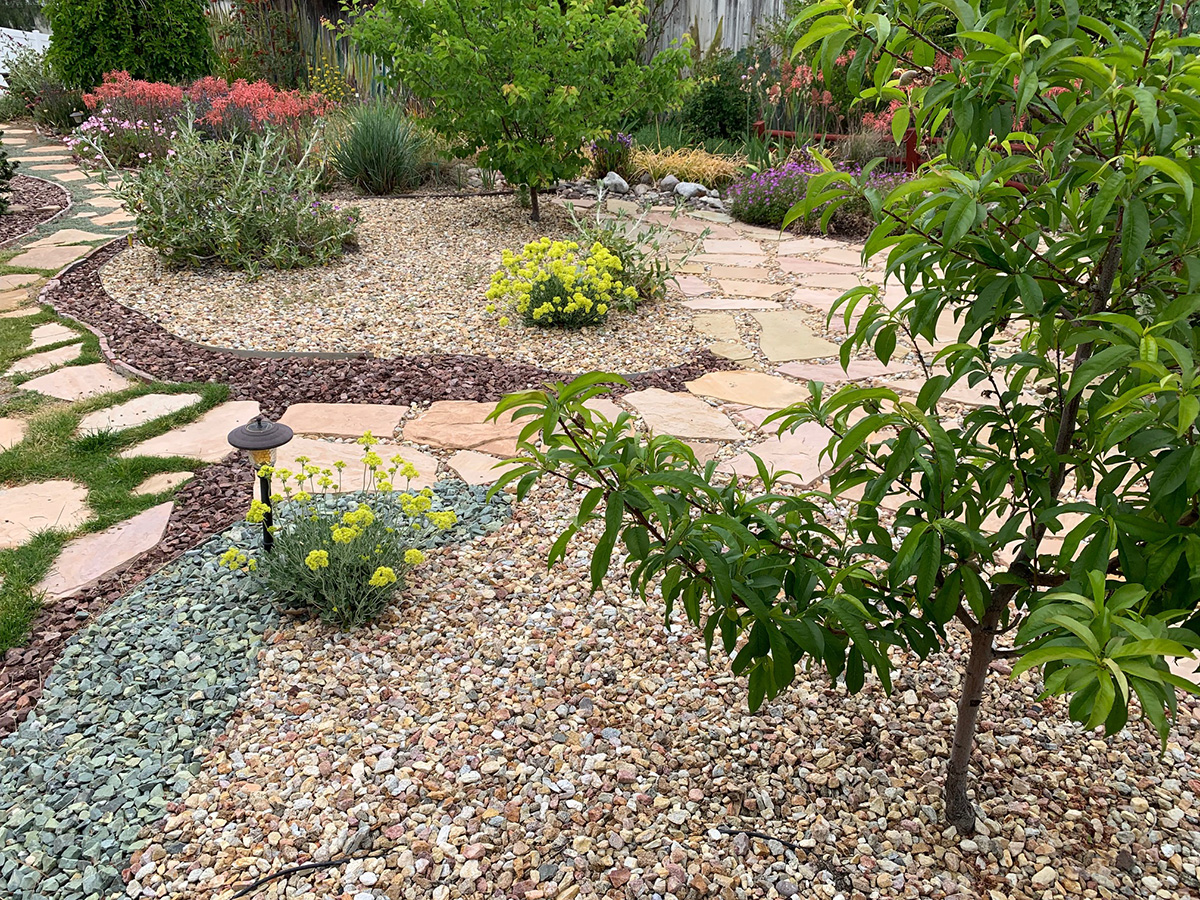
Have fun choosing and designing paving materials. Stones, rocks, gravel, and preformed pavers can transform an ordinary garden into something special. Smaller stonework is simple to install and easy to move should you change your mind later. It can blend nicely with plantings, reducing the need for watering a full landscape without looking barren. A creative stone design offers limitless opportunities to customize unique, artistic, and practical gardens that will absorb excess rain in wet weather yet require minimal irrigation when it’s dry.
—Jane Gates is the owner of Gates & Croft Horticultural Design in Los Angeles and the author of All the Garden’s a Stage: Choosing the Best Performing Plants for a Sustainable Garden.
Photos: Jane Gates
Fine Gardening Recommended Products

Razor-Back Potato/Refuse Hook
Fine Gardening receives a commission for items purchased through links on this site, including Amazon Associates and other affiliate advertising programs.
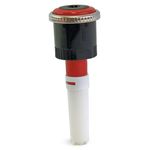
Hunter Industries MP-1000-90 Hunter Nozzle
Fine Gardening receives a commission for items purchased through links on this site, including Amazon Associates and other affiliate advertising programs.
- Double-pop technology flushes the nozzle during start-up and shutdown to prevent clogging
- Wind-resistant, multi-directional streams provide even coverage
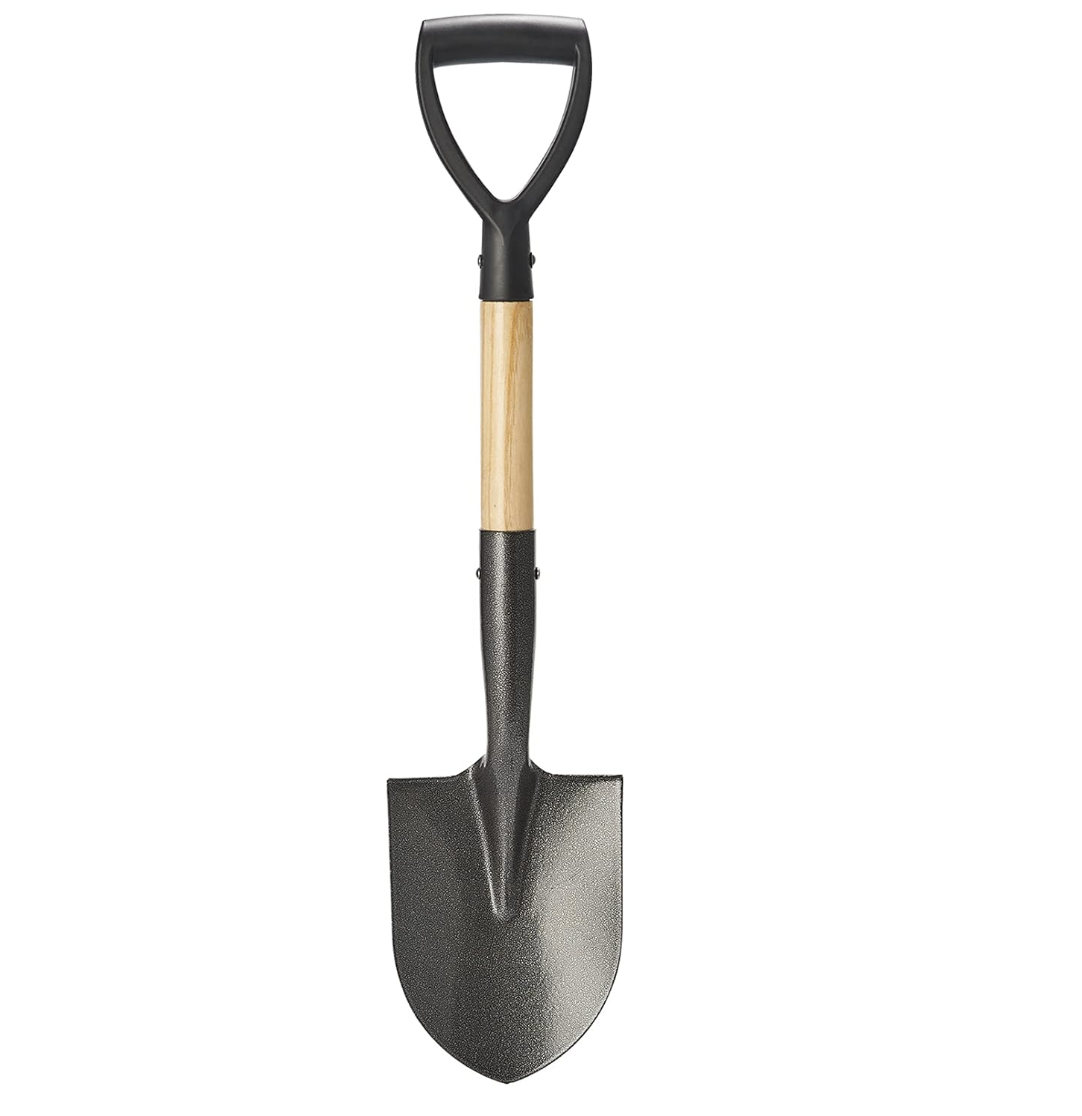
Corona® Multi-Purpose Metal Mini Garden Shovel
Fine Gardening receives a commission for items purchased through links on this site, including Amazon Associates and other affiliate advertising programs.




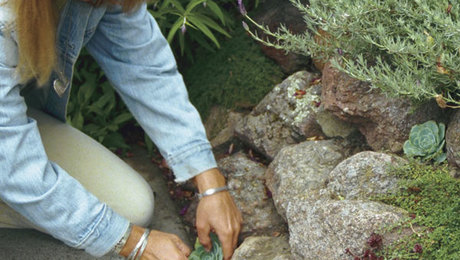














Comments
Log in or create an account to post a comment.
Sign up Log in